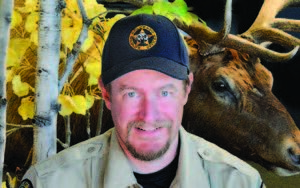By Aaron Berscheid
District Wildlife Manager, CPW
As a resident of Northeastern El Paso County, I am sure you all have seen the pronghorn that inhabit the area. They are an awesome creature that has been around for millions of years and are synonymous with the plains states.
Along with pronghorn, I am sure you have also seen the massive amount of new housing developments that have been cropping up in the same areas the pronghorn like to hang out.
You might ask, how does this development affect the pronghorn and what is the plan to manage them? Because this issue is so visible, I am constantly getting asked this question and speaking to people voicing their concerns. As development continues, these questions become more relevant, and I wanted to discuss a little bit about the issue here.
CPW is aware that with increased development comes more roads and more traffic on those roads. People concerned about the pronghorn are concerned that they are trapped and will have no place to go.
While it is clear that they are running out of their historical habitat, the pronghorn do move; and, in fact, I have seen them in places that you would never expect. I have even seen them in very crowded housing developments and moving to new pastures in the middle of the night.
The wildlife biologist for the area and I have been observing and monitoring this herd for years, and the pronghorn are not trapped by the housing developments. They are able to travel freely and the encroaching developments are not happening fast enough to create an urgent concern for their well-being.
Some who are concerned for their well-being suggest that we take a more direct approach and trap the pronghorn to relocate them. Biological work is rarely so simple, and trying to translocate the pronghorn would be dangerous for CPW personnel, the general public and the pronghorn themselves due to concerns for public safety, animal welfare and cost.
Public safety is a major concern with a translocation project. Relocating the herd would require the capture of the entire herd. The only way to effectively capture the herd would be the use of helicopters to either push the herd into a trap or to net-gun individual animals. Also, the area where the pronghorn reside is within the Colorado Springs Airport airspace, meaning the maneuvers required for the helicopter to successfully trap the herd would not be permitted.
If we were to attempt to capture these animals, there is a high probability that we would not be able to get the pronghorn to cooperate and go the direction that we want. This could result in pushing animals across roads, causing traffic hazards and public safety concerns.
Additionally, The Flight for Life helicopter is stationed nearby out of the Saint Francis Medical Center and would have priority for air traffic. We would not want to impede their air traffic with a wildlife operation.
Animal welfare is cited as a reason to relocate the pronghorn, but trapping and relocating wildlife is extremely stressful to the animals and can cause mortality due to high stress and/or capture myopathy. Capture myopathy is muscle damage that results from extreme exertion, struggle or stress. From past experiences as a wildlife officer, pronghorn are more susceptible to these issues than other species.
Cost is another concern with a translocation project. If you consider the human resource costs and need to work within the guidelines described above, a project to relocate the pronghorn would be far too costly when the risks to public safety, animal welfare and animal needs are accounted for.
CPW would love it if the habitat that these pronghorn are losing would not be developed. However, CPW does not have the authority to regulate how private property is managed. I do comment on every development plan that is submitted to the county, and for the most part developers follow suggested guidelines when dealing with wildlife.
The pronghorn will eventually decide to migrate on their own, and the only feasible option is to allow the pronghorn to move to better pastures on their own. The best thing we can all do is pay attention while driving and slow down when we see these animals near the roads.
In the coming months, I’ll share more stories as I write about wildlife issues in our community. Got a question, problem or column idea? Please email me at aaron.berscheid@state.co.us or call me at 719-227-5231.
I might even answer your question in a future installment of “Wildlife Matters.”




